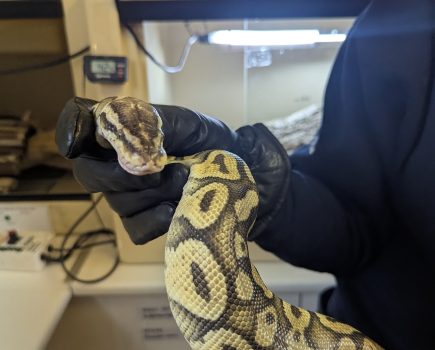The British Hen Welfare Trust shares its top tips for creating the perfect hen haven in your garden.
Is there a more joyful sight than chickens pottering around the garden on a warm sunny day? With gardens blooming, now’s the perfect time to think about creating a hen-friendly space which looks great and both you and your feathered friends can enjoy.
SAFE SPACE
It’s wonderful to watch your flock explore the garden, but it’s best to keep hens in a fixed and secure run when unsupervised to protect them from predators. This has the added benefit of preserving your precious planted areas when you’re not around to keep a watchful eye. Adding some greenery around and inside the run is a good way to make sure your hens don’t miss out on the fun. Plant climbers such as clematis and honeysuckle at the base of the fence to grow up alongside it, and if there’s room in the run, add some fruit trees and bushes. This creates areas of interest as well as shade and the occasional tasty treat.
PERFECT PLANTING
It won’t come as a surprise that there are lots of plants that hens like to eat. Herbs are especially tasty to hens, and some even have added benefits. These include comfrey (a source of protein and calcium),rosemary (helps to repel nasty insects), thyme (good for their respiratory system), sage (an antioxidant) and lavender (can be calming). Hens also enjoy foraging vegetables such as chard and fennel. Aside from veg and herbs, chickens do like to nibble on grass. In fact, if you have too many free ranging around a small garden, it may not stay green for too long!
PROBLEM PLANTS
Not everything that grows in the garden is safe for hens; plants such as ivy, foxgloves, delphiniums, hyacinth and rhododendrons are potentially dangerous so watch out for them if your hens are roaming free. While hens are quite good at staying away from things that are bad for them, it’s not worth the risk if they start to show interest in anything harmful.
CONSTANT GARDENERS
Allowing your flock free access to the garden has its benefits. While scratching around and creating dust baths, hens are also rototilling and airing the soil, meaning it’s all broken up and ready for planting. They also leave behind their nitrogen rich manure, which is great for composting and enriching your plants to help them to thrive. Think of it as their way of saying thank you for having such a nice time.
SEASONAL TIPS
From laying to lice, here’s the lowdown on how to help your hens thrive in the new season:
- Hurrah for sunshine! Longer days mean more light and extended time outside for our feathered friends, which is great news for them and for you, if you look forward to your daily egg collection. The combination of sunshine and warmer weather is seen by some hen keepers to mean that your girls are spending less energy keeping warm and have more available for producing eggs. Free range foraging also helps produce better eggs, affecting the quality, colour and taste.
- Grass clippings Grass can hold some nutritional value for hens in small helpings, but feeding them freshly mown grass clippings is a big no, no.That’s because mown grass has already started to break down so, if eaten, clippings can cause issues such as diarrhoea and crop impaction. On top of this, the length and sheer quantity of clippings is likely to be too much for your hens, who could become seriously ill if they gorge on it.
This article extract was taken from the June 2024 edition of The Country Smallholder. To read the article in full, you can buy the issue here.
To receive regular copies of The Country Smallholder magazine featuring more articles like this, subscribe here.
For FREE updates from the world of smallholding, sign up for The Country Smallholder newsletter here.








